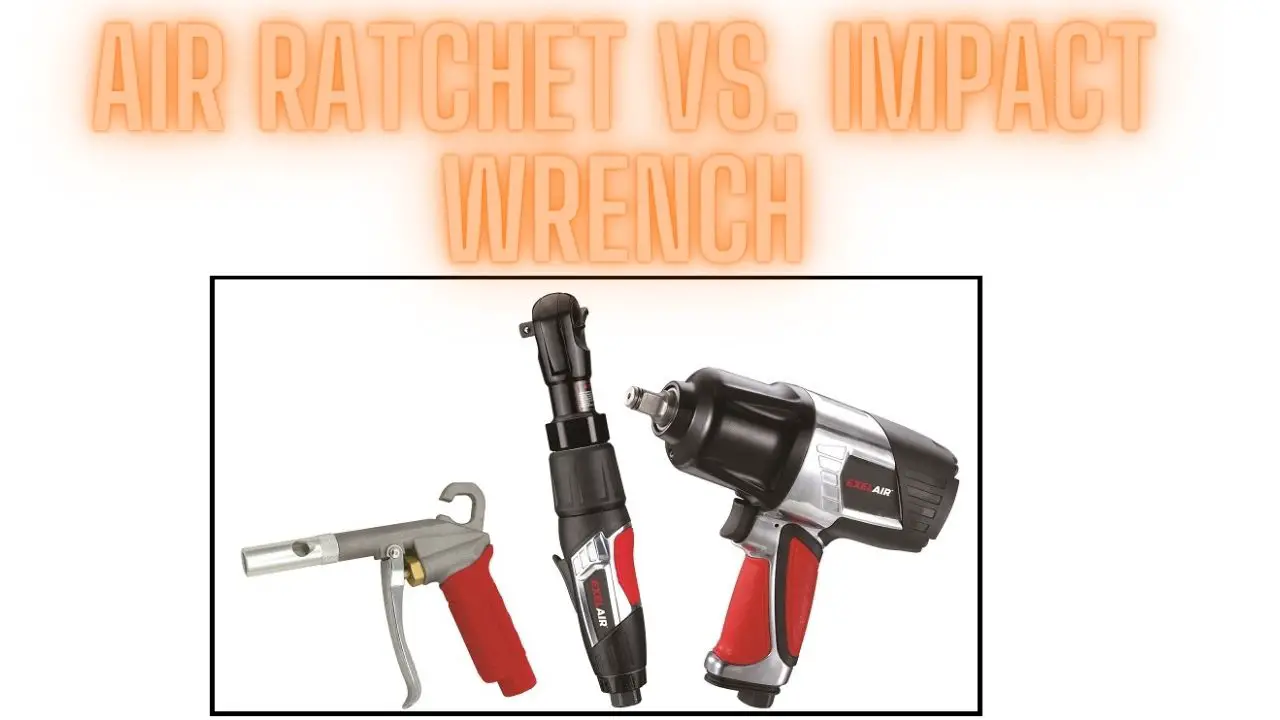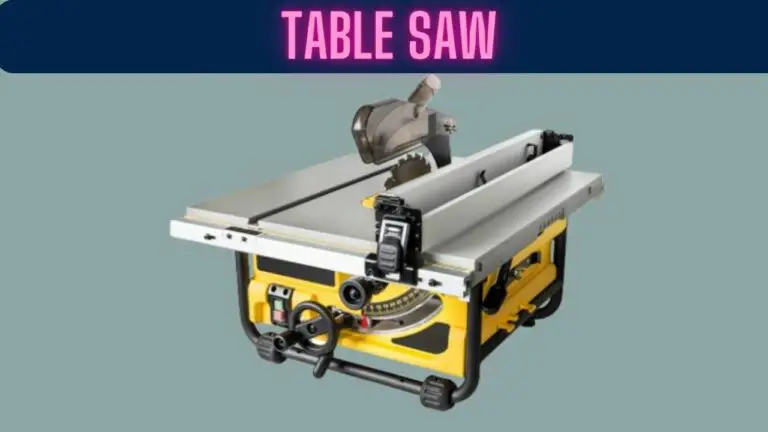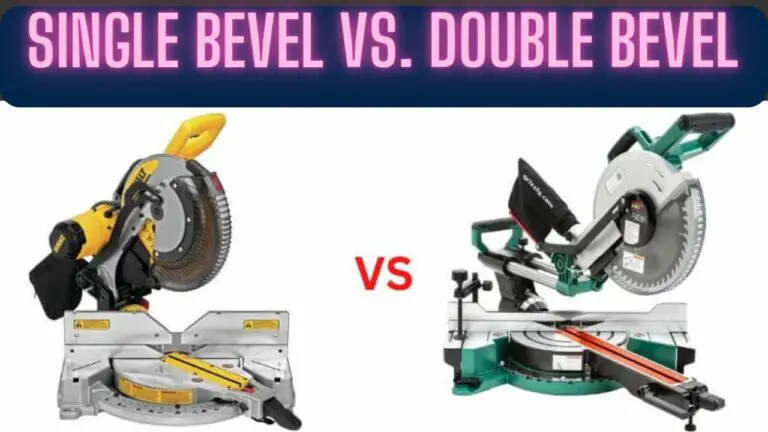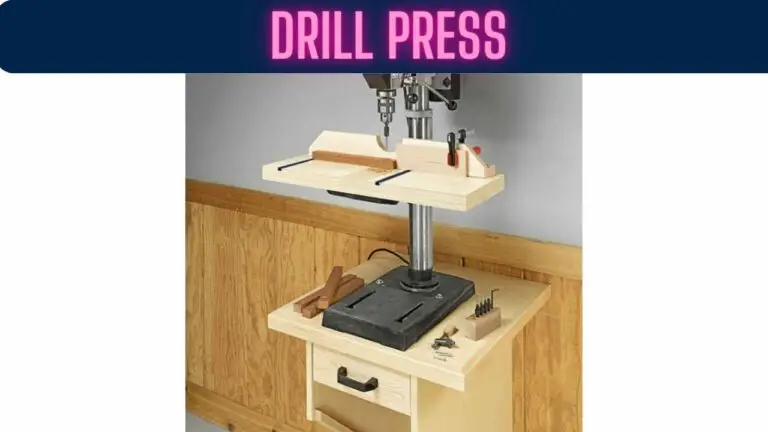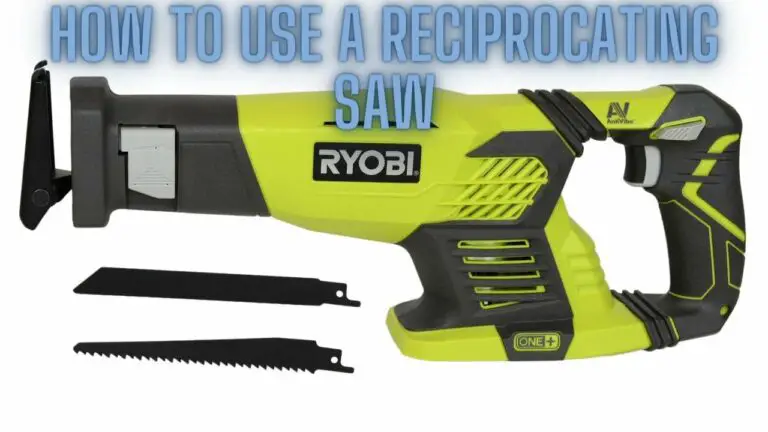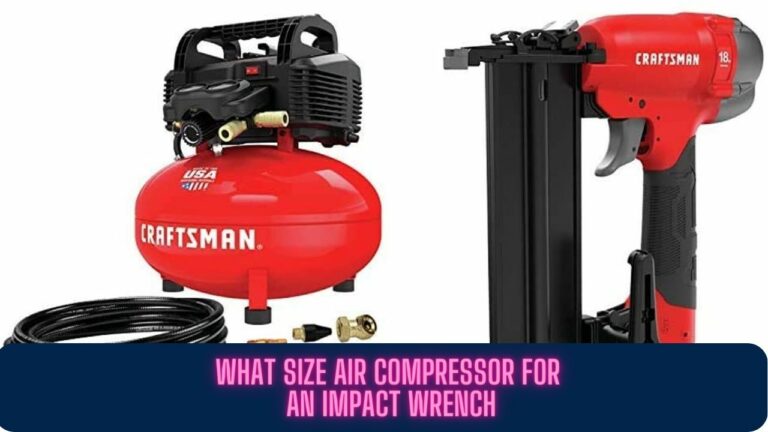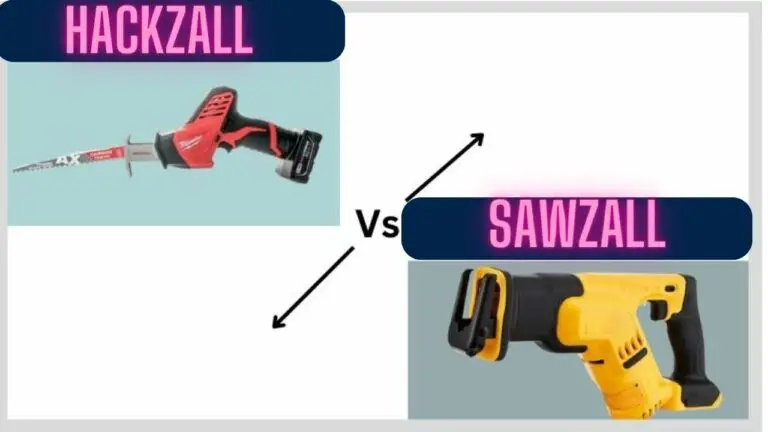Air Ratchet vs. Impact Wrench: Unveiling the Power Tools Showdown
Introduction
When it comes to automotive and mechanical work, having the right tools can make all the difference in efficiency and effectiveness. Two commonly used pneumatic tools in workshops are the air ratchet and the impact wrench. While both serve the purpose of tightening and loosening fasteners, they have distinct differences in design, operation, and application.
In this comparison, we’ll delve into the key characteristics of air ratchets and impact wrenches, exploring their mechanisms, performance, uses, advantages, and considerations for selection and maintenance. By understanding the strengths and limitations of each tool, users can make informed decisions based on their specific needs and tasks at hand.
Overview of Air Ratchet
An air ratchet, also known as a pneumatic ratchet or air-powered ratchet wrench, is a handheld power tool used for tightening or loosening fasteners in automotive, mechanical, and industrial applications. It operates using compressed air supplied by an air compressor, making it a pneumatic tool.
Key features of an air ratchet include:
- Compact Size: Air ratchets are typically compact and lightweight, allowing for easy maneuverability in tight spaces and around intricate machinery.
- Ratcheting Mechanism: Similar to a manual ratchet wrench, an air ratchet features a ratcheting mechanism that allows the user to apply torque in one direction while the tool spins freely in the opposite direction. This mechanism enables fasteners to be tightened or loosened quickly and efficiently.
- Variable Speed Control: Many air ratchets come with variable speed control, allowing the user to adjust the speed and torque output based on the task at hand. This feature enhances precision and control during operation.
- Quick-Release Socket: Air ratchets typically feature a quick-release socket mechanism, which allows for easy attachment and removal of sockets without the need for additional tools.
- Forward/Reverse Switch: Most air ratchets have a convenient forward/reverse switch that enables the user to change the direction of rotation with ease, facilitating both tightening and loosening of fasteners.
- Durable Construction: Air ratchets are constructed with durable materials such as hardened steel or aluminum alloy to withstand the rigors of industrial use. They are designed to be robust and long-lasting, even in demanding work environments.
- Compatibility with Standard Sockets: Air ratchets are compatible with standard sockets, allowing users to utilize a wide range of socket sizes and types for different fastener applications.
- Low Maintenance: Compared to electric or cordless ratchets, air ratchets generally require less maintenance since they have fewer moving parts and no batteries to recharge. Regular lubrication and occasional cleaning are typically all that’s needed to keep an air ratchet in good working condition.
Overall, air ratchets are valued for their versatility, speed, and efficiency in automotive repair, machinery maintenance, and assembly tasks. They are commonly found in professional workshops, garages, manufacturing facilities, and construction sites where pneumatic tools are preferred for their power and reliability.
Overview of Impact Wrench
An impact wrench, also known as an air gun, pneumatic wrench, or torque gun, is a powerful handheld tool used for fastening or loosening nuts, bolts, and other fasteners. Like the air ratchet, the impact wrench operates using compressed air supplied by an air compressor.
Key features of an impact wrench include:
- High Torque Output: Impact wrenches are capable of delivering high levels of torque, making them ideal for heavy-duty fastening and loosening tasks. They can generate significantly more torque compared to manual wrenches or ratchets, allowing for the removal of stubborn or rusted fasteners.
- Impact Mechanism: Unlike traditional ratchet mechanisms, impact wrenches utilize an impact mechanism to deliver torque. This mechanism consists of a rotating hammer and anvil system that delivers rapid, repeated impacts to the output shaft, creating a high-torque rotational force.
- Variable Speed Control: Many impact wrenches feature variable speed control, allowing users to adjust the speed and torque output to match the requirements of the task. This feature provides flexibility and precision during operation, allowing for controlled tightening or loosening of fasteners.
- Forward/Reverse Switch: Impact wrenches are equipped with a convenient forward/reverse switch that enables the user to change the direction of rotation with ease. This feature allows for both tightening and loosening of fasteners, enhancing versatility and efficiency.
- Quick-Change Chuck: Impact wrenches often feature a quick-change chuck mechanism that allows for easy attachment and removal of sockets. This feature facilitates fast socket changes without the need for additional tools, improving productivity and workflow.
- Durable Construction: Impact wrenches are built with durable materials such as hardened steel or aluminum alloy to withstand the high torque and impact forces generated during operation. They are designed to be robust and reliable, even in demanding industrial environments.
- Compatibility with Standard Sockets: Impact wrenches are compatible with standard sockets, allowing users to utilize a wide range of socket sizes and types for different fastener applications. This compatibility enhances versatility and usability in various tasks and industries.
- Low Maintenance: Similar to air ratchets, impact wrenches require minimal maintenance due to their simple design and durable construction. Regular lubrication and occasional cleaning are typically all that’s needed to keep an impact wrench in optimal working condition.
Impact wrenches are commonly used in automotive repair, construction, manufacturing, and assembly applications where high torque and fast operation are required. They are prized for their efficiency, power, and ability to tackle tough fastening challenges with ease.
Mechanism and Operation
Air Ratchet:
- Mechanism: Air ratchets utilize a ratcheting mechanism similar to manual ratchet wrenches. The tool features a gear and pawl system that allows the socket to rotate in one direction while preventing backward movement, enabling the tightening or loosening of fasteners.
- Operation: When air pressure is applied to the tool from an air compressor, it powers a pneumatic motor inside the ratchet. The motor drives the gear mechanism, causing the socket to rotate in the desired direction. The user applies downward pressure on the ratchet handle to engage the socket with the fastener, while the ratchet’s ratcheting mechanism allows for quick and efficient turning in confined spaces.
Impact Wrench:
- Mechanism: Impact wrenches employ an impact mechanism to deliver high torque output. This mechanism consists of a rotating hammer and anvil system housed within the tool. As the motor rotates the hammer, it strikes the anvil with rapid, repeated impacts, generating a powerful rotational force.
- Operation: When air pressure is supplied to the impact wrench, it drives the pneumatic motor, which in turn rotates the hammer mechanism. As the hammer strikes the anvil, the high-energy impacts create a torque force that is transmitted to the socket. The user directs the socket onto the fastener, and the impact wrench rapidly tightens or loosens the fastener with minimal effort.
Comparison:
- Torque Output: Impact wrenches typically deliver higher torque output compared to air ratchets due to their impact mechanism. This makes impact wrenches more suitable for heavy-duty fastening tasks and for dealing with stubborn or rusted fasteners.
- Speed and Efficiency: Air ratchets are generally faster and more efficient for tasks that require repetitive turning in tight spaces, thanks to their continuous ratcheting action. Impact wrenches, on the other hand, are preferred for tasks where maximum torque is needed to quickly loosen or tighten fasteners.
- Control: Air ratchets offer better control and precision for delicate tasks due to their variable speed control and continuous ratcheting action. Impact wrenches provide less control but excel in applications where brute force is required to overcome resistance and remove stubborn fasteners.
Overall, the choice between an air ratchet and an impact wrench depends on the specific requirements of the task, including torque output, speed, control, and the nature of the fasteners being worked with. Both tools have their advantages and are valuable additions to any workshop or industrial setting.
Differences in Design
- Ratcheting Mechanism:
- Air Ratchet: Air ratchets feature a ratcheting mechanism that allows the socket to rotate in one direction while preventing backward movement. This mechanism enables the user to tighten or loosen fasteners with a continuous ratcheting action.
- Impact Wrench: Impact wrenches utilize an impact mechanism, consisting of a rotating hammer and anvil system, to deliver rapid, repeated impacts to the output shaft. This mechanism generates high torque output for fastening or loosening fasteners.
- Size and Weight:
- Air Ratchet: Air ratchets are generally smaller and lighter than impact wrenches, making them more maneuverable and suitable for tasks in confined spaces or overhead applications.
- Impact Wrench: Impact wrenches tend to be larger and heavier due to their impact mechanism and higher torque output. While they may be less portable than air ratchets, they excel in heavy-duty applications and tasks that require maximum torque.
- Torque Output:
- Air Ratchet: Air ratchets typically have lower torque output compared to impact wrenches, making them more suitable for light to medium-duty fastening tasks.
- Impact Wrench: Impact wrenches are designed to deliver high torque output, making them ideal for heavy-duty fastening tasks and for tackling stubborn or rusted fasteners.
- Control and Precision:
- Air Ratchet: Air ratchets offer better control and precision due to their continuous ratcheting action and variable speed control. This makes them suitable for delicate tasks that require precise tightening or loosening of fasteners.
- Impact Wrench: Impact wrenches provide less control and precision compared to air ratchets, but they excel in applications where brute force is needed to overcome resistance and remove stubborn fasteners quickly.
- Socket Attachment:
- Air Ratchet: Air ratchets typically feature a quick-release socket mechanism that allows for easy attachment and removal of sockets without the need for additional tools.
- Impact Wrench: Impact wrenches also feature a quick-change chuck mechanism for easy socket attachment and removal, facilitating fast socket changes during operation.
- Speed and Efficiency:
- Air Ratchet: Air ratchets are generally faster and more efficient for tasks that require repetitive turning in tight spaces, thanks to their continuous ratcheting action.
- Impact Wrench: Impact wrenches are preferred for tasks where maximum torque is needed to quickly loosen or tighten fasteners, making them more efficient for heavy-duty applications.
Understanding the differences in design between air ratchets and impact wrenches is essential for selecting the right tool for the task at hand. Each tool has its advantages and limitations, and choosing the appropriate tool can help improve productivity and efficiency in various automotive, mechanical, and industrial applications.
Performance Comparison
- Torque Output:
- Air Ratchet: Air ratchets typically have lower torque output compared to impact wrenches. They are suitable for light to medium-duty fastening tasks where high torque is not required.
- Impact Wrench: Impact wrenches deliver high torque output, making them ideal for heavy-duty fastening tasks and for dealing with stubborn or rusted fasteners.
- Speed and Efficiency:
- Air Ratchet: Air ratchets are generally faster and more efficient for tasks that require repetitive turning in tight spaces, thanks to their continuous ratcheting action.
- Impact Wrench: Impact wrenches excel in applications where maximum torque is needed to quickly loosen or tighten fasteners. They are faster and more efficient for heavy-duty applications compared to air ratchets.
- Control and Precision:
- Air Ratchet: Air ratchets offer better control and precision due to their continuous ratcheting action and variable speed control. They are suitable for tasks that require precise tightening or loosening of fasteners.
- Impact Wrench: Impact wrenches provide less control and precision compared to air ratchets. They are designed for applications where brute force is needed to overcome resistance and remove stubborn fasteners quickly.
- Versatility:
- Air Ratchet: Air ratchets are versatile tools suitable for a wide range of light to medium-duty fastening tasks in automotive, mechanical, and industrial applications.
- Impact Wrench: Impact wrenches are versatile tools capable of handling heavy-duty fastening tasks in automotive repair, construction, manufacturing, and assembly applications.
- Portability and Maneuverability:
- Air Ratchet: Air ratchets are typically smaller and lighter than impact wrenches, making them more portable and maneuverable in tight spaces or overhead applications.
- Impact Wrench: Impact wrenches are larger and heavier due to their higher torque output and impact mechanism. While they may be less portable, they are still maneuverable enough for most industrial tasks.
- Effort Required:
- Air Ratchet: Air ratchets require less physical effort from the user compared to manual wrenches or ratchets, thanks to their pneumatic power source.
- Impact Wrench: Impact wrenches require minimal effort from the user, as the impact mechanism generates the torque needed to tighten or loosen fasteners rapidly.
In summary, the performance of air ratchets and impact wrenches differs based on factors such as torque output, speed, control, versatility, portability, and the level of physical effort required from the user. Choosing the right tool depends on the specific requirements of the task and the desired balance between torque, speed, and precision.
Applications and Uses
Air Ratchet:
- Automotive Repair: Air ratchets are commonly used in automotive repair and maintenance tasks, such as engine assembly, brake system repair, suspension work, and tightening or loosening bolts in hard-to-reach areas.
- Machinery Maintenance: They are utilized for maintenance and repair tasks in industrial machinery, equipment, and manufacturing plants, including conveyor systems, production machinery, and assembly lines.
- Construction: Air ratchets find applications in construction projects for installing fixtures, assembling scaffolding, tightening bolts on structural components, and other tasks requiring repetitive fastening in confined spaces.
- HVAC Systems: In heating, ventilation, and air conditioning (HVAC) systems, air ratchets are used for installing ductwork, securing fasteners on HVAC units, and assembling components in HVAC installations.
- Assembly and Manufacturing: They are employed in assembly and manufacturing processes for tightening or loosening bolts, nuts, and screws on machinery, equipment, and consumer products.
Impact Wrench:
- Automotive Industry: Impact wrenches are extensively used in the automotive industry for tasks such as tire changing, wheel lug nut tightening, suspension work, and engine assembly.
- Construction and Building Trades: In construction and building trades, impact wrenches are used for structural assembly, framing, decking, and fastening applications where high torque is required.
- Heavy Equipment Maintenance: They are essential tools for maintenance and repair of heavy equipment and machinery in industries such as mining, agriculture, forestry, and construction.
- Manufacturing and Assembly: Impact wrenches find applications in manufacturing and assembly processes for tightening or loosening bolts, nuts, and fasteners on machinery, equipment, and industrial products.
- Shipbuilding and Aerospace: In shipbuilding and aerospace industries, impact wrenches are used for assembling large structures, securing fasteners on vessels, aircraft, and aerospace components.
Common Uses Across Both Tools:
- Maintenance and Repair: Both air ratchets and impact wrenches are used for maintenance and repair tasks in various industries, including automotive, manufacturing, construction, and maintenance.
- Assembly Work: They are employed in assembly processes for tightening or loosening fasteners on machinery, equipment, and consumer products during manufacturing and assembly operations.
- Versatile Fastening Tasks: Both tools are versatile for a wide range of fastening tasks, including bolt tightening, nut tightening, screw tightening, and other fastening applications in industrial, commercial, and residential settings.
- DIY Projects: Air ratchets and impact wrenches are also used by DIY enthusiasts and hobbyists for automotive repairs, home improvement projects, woodworking, and other DIY tasks requiring fastening or loosening of bolts and nuts.
In summary, air ratchets and impact wrenches have diverse applications across automotive, industrial, construction, manufacturing, and maintenance sectors. Their versatility, power, and efficiency make them indispensable tools for fastening and loosening tasks in various industries and settings.
Advantages and Disadvantages
Air Ratchet:
Advantages:
- Compact and Lightweight: Air ratchets are typically smaller and lighter than impact wrenches, making them easier to maneuver in tight spaces and overhead applications.
- Precise Control: They offer better control and precision due to their continuous ratcheting action and variable speed control, making them suitable for delicate tasks.
- Versatility: Air ratchets are versatile tools suitable for a wide range of light to medium-duty fastening tasks in automotive, mechanical, and industrial applications.
- Low Maintenance: They require minimal maintenance due to their simple design and durable construction, resulting in lower maintenance costs and longer tool lifespan.
- Efficiency: Air ratchets are efficient for tasks that require repetitive turning in tight spaces, thanks to their continuous ratcheting action and variable speed control.
Disadvantages:
- Lower Torque Output: Air ratchets have lower torque output compared to impact wrenches, limiting their suitability for heavy-duty fastening tasks.
- Limited Power: They rely on the availability of compressed air from an air compressor, which may limit their use in remote or mobile applications where access to compressed air is not readily available.
- Less Speed: Air ratchets may be slower compared to impact wrenches for tasks that require rapid tightening or loosening of fasteners.
- Less Effective on Stubborn Fasteners: They may struggle to remove stubborn or rusted fasteners due to their lower torque output and continuous ratcheting action.
Impact Wrench:
Advantages:
- High Torque Output: Impact wrenches deliver high torque output, making them ideal for heavy-duty fastening tasks and for dealing with stubborn or rusted fasteners.
- Fast Operation: They are faster and more efficient for tasks that require rapid tightening or loosening of fasteners, thanks to their impact mechanism.
- Versatility: Impact wrenches are versatile tools capable of handling heavy-duty fastening tasks in automotive repair, construction, manufacturing, and assembly applications.
- Effortless Operation: They require minimal effort from the user, as the impact mechanism generates the torque needed to tighten or loosen fasteners rapidly.
Disadvantages:
- Large and Heavy: Impact wrenches are larger and heavier compared to air ratchets, making them less portable and maneuverable in tight spaces.
- Less Control: They provide less control and precision compared to air ratchets, which may limit their suitability for delicate tasks that require precise tightening or loosening of fasteners.
- Higher Maintenance: Impact wrenches may require more maintenance compared to air ratchets due to their complex impact mechanism and higher torque output.
- Potential for Over-Tightening: Due to their high torque output, impact wrenches may have a higher risk of over-tightening fasteners if not used carefully, which can lead to damage or stripping of threads.
Overall, the choice between an air ratchet and an impact wrench depends on the specific requirements of the task, including torque output, speed, control, and the nature of the fasteners being worked with. Both tools have their advantages and limitations, and selecting the appropriate tool can help improve productivity and efficiency in various applications.
Selection Considerations
- Torque Requirements: Determine the torque requirements of the task at hand. If high torque is needed for heavy-duty fastening tasks or dealing with stubborn fasteners, an impact wrench may be more suitable. For lighter to medium-duty tasks that require less torque, an air ratchet may suffice.
- Application Type: Consider the specific applications and tasks for which the tool will be used. Air ratchets are suitable for tasks that require precise control and maneuverability in tight spaces, while impact wrenches excel in heavy-duty fastening tasks and applications where maximum torque is needed.
- Workspace Constraints: Evaluate the workspace constraints, including access to compressed air and the availability of space. Air ratchets are more compact and lightweight, making them easier to maneuver in confined spaces or overhead applications. Impact wrenches, while more powerful, may be bulkier and less portable.
- Frequency of Use: Determine how frequently the tool will be used and for what duration. If the tool will be used extensively for heavy-duty tasks, investing in a high-quality impact wrench with a durable construction may be justified. For occasional or light-duty use, a more affordable air ratchet may suffice.
- User Comfort and Ergonomics: Consider the ergonomics and user comfort features of the tool, such as grip design, handle shape, and vibration reduction. Choose a tool that feels comfortable to hold and use for extended periods, especially for tasks that require repetitive motion.
- Socket Compatibility: Ensure compatibility with standard sockets and accessories. Both air ratchets and impact wrenches should be compatible with a wide range of socket sizes and types for versatility in different fastening applications.
- Budget: Evaluate the budget constraints and cost considerations. Air ratchets are generally more affordable compared to impact wrenches, making them a cost-effective option for users with limited budgets or for tasks that do not require high torque output.
- Brand Reputation and Warranty: Research the reputation of different brands and manufacturers in the market. Choose a reputable brand known for producing high-quality pneumatic tools with reliable performance and durability. Additionally, consider the warranty coverage and after-sales support offered by the manufacturer.
- User Skill Level: Consider the skill level and experience of the user operating the tool. Air ratchets may be more suitable for users who require precise control and maneuverability, while impact wrenches may be preferred by experienced users handling heavy-duty tasks.
By carefully considering these selection criteria, users can choose the most appropriate tool for their specific needs and requirements, ensuring optimal performance, efficiency, and user satisfaction.
Maintenance and Care
Proper maintenance and care are essential for ensuring the longevity and optimal performance of air ratchets and impact wrenches. Here are some maintenance tips to keep these tools in good working condition:
- Regular Lubrication: Both air ratchets and impact wrenches rely on pneumatic motors for operation, which require proper lubrication to reduce friction and wear. Follow the manufacturer’s recommendations for lubricating the internal components regularly using pneumatic tool oil or lubricating spray.
- Inspect for Wear and Damage: Routinely inspect the tool for signs of wear, damage, or loose components. Check the housing, handle, trigger, and socket attachment mechanism for any cracks, dents, or defects that may affect performance or safety. Replace worn or damaged parts promptly to prevent further damage or injury.
- Cleanliness: Keep the tool clean and free of debris, dust, and contaminants that can accumulate during use. Use compressed air or a soft brush to remove dirt and debris from the exterior and interior components. Avoid using harsh chemicals or solvents that may damage the tool’s finish or internal components.
- Socket Maintenance: Inspect sockets regularly for wear, damage, or deformation. Clean sockets with a wire brush or solvent to remove debris and ensure a proper fit with fasteners. Replace worn or damaged sockets to maintain secure fastening and prevent slippage or stripping of fastener heads.
- Air Filter Maintenance: Check and clean the air filter regularly to ensure proper airflow and prevent contamination of the pneumatic system. Replace the air filter if it becomes clogged, damaged, or excessively dirty to maintain optimal performance and prevent damage to internal components.
- Handle with Care: Handle the tool with care to avoid dropping or mishandling, which can cause damage to internal components or external surfaces. Store the tool in a secure location when not in use to prevent accidental damage or theft.
- Proper Storage: Store air ratchets and impact wrenches in a clean, dry environment away from moisture, extreme temperatures, and corrosive substances. Use protective cases or storage containers to prevent dust, debris, or other contaminants from accumulating on the tool.
- Follow Manufacturer’s Guidelines: Follow the manufacturer’s guidelines and recommendations for maintenance, care, and storage outlined in the tool’s user manual. Adhering to these guidelines will help ensure safe and reliable operation and prolong the lifespan of the tool.
By implementing these maintenance practices and following manufacturer’s guidelines, users can maximize the performance, efficiency, and longevity of their air ratchets and impact wrenches, resulting in safer and more productive operations. Regular maintenance and care are essential investments in preserving the value and functionality of these valuable pneumatic tools.
Safety Precautions
- Read the Manual: Familiarize yourself with the manufacturer’s instructions and safety guidelines provided in the tool’s user manual before operating the air ratchet or impact wrench.
- Personal Protective Equipment (PPE): Wear appropriate personal protective equipment, including safety glasses or goggles, hearing protection, gloves, and safety footwear, to protect against flying debris, noise, and potential hand injuries.
- Secure Work Area: Ensure the work area is clean, well-lit, and free of clutter or obstructions. Secure the workpiece properly to prevent movement or shifting during operation.
- Compressed Air Safety: Use only clean, dry, and regulated compressed air from a suitable air compressor. Check for leaks in air hoses and fittings before use, and ensure the air supply is disconnected when not in use.
- Tool Inspection: Inspect the air ratchet or impact wrench for any visible damage, defects, or loose components before each use. Do not operate the tool if it appears damaged or malfunctioning.
- Proper Handling: Hold the tool securely with both hands during operation, maintaining a firm grip on the handle and trigger. Do not use excessive force or overreach when operating the tool, and avoid operating it with one hand.
- Socket Size and Type: Use the correct size and type of socket for the fastener being tightened or loosened. Ensure the socket is securely attached to the tool’s drive mechanism before operation.
- Direction of Rotation: Verify the direction of rotation (clockwise or counterclockwise) before operating the tool. Use the forward/reverse switch to change the direction of rotation as needed.
- Avoid Contact with Moving Parts: Keep hands, fingers, clothing, and other objects away from moving parts, such as the rotating socket or output shaft, during operation. Do not attempt to adjust or modify the tool while it is running.
- Disconnect Power Source: Disconnect the air supply or power source before performing any maintenance, cleaning, or troubleshooting on the tool. Wait for the tool to come to a complete stop before making any adjustments or changes.
- Cooling Period: Allow the tool to cool down before handling or storing it after prolonged use. Do not touch hot surfaces, such as the motor housing or exhaust ports, to avoid burns or injuries.
- Training and Supervision: Ensure that operators are properly trained and supervised in the safe operation of air ratchets and impact wrenches. Provide ongoing safety training and supervision to promote safe work practices and prevent accidents.
Following these safety precautions will help minimize the risk of accidents, injuries, and property damage associated with the operation of air ratchets and impact wrenches. Prioritizing safety ensures a safe and productive working environment for all users.
Air Ratchet vs. Impact Wrench FAQS
What is an air ratchet, and what is its primary use?
- An air ratchet is a pneumatic tool designed for precise and controlled fastening and unfastening of bolts and nuts. Its primary use is in applications that require torque control and precision, especially in tight spaces or with delicate components.
What is an impact wrench, and what is its primary use?
- An impact wrench is a pneumatic tool designed for high-torque applications, allowing for the quick loosening or tightening of large and stubborn fasteners. Its primary use is in heavy-duty tasks such as automotive repair, construction, and industrial applications.
How do air ratchets and impact wrenches differ in terms of torque output?
- Air ratchets typically provide lower torque output compared to impact wrenches. Air ratchets offer enough torque for standard fastening tasks, while impact wrenches deliver significantly higher torque for heavy-duty applications.
Can I use an air ratchet for changing tires on my car?
- While it’s possible to use an air ratchet for changing tires, it may not be the most efficient choice. Impact wrenches are preferred for this task due to their higher torque, allowing for faster and more reliable tire changes.
Are air ratchets quieter than impact wrenches?
- Yes, air ratchets are generally quieter than impact wrenches. They produce less noise due to their continuous rotary motion, making them suitable for tasks where noise control is important.
Can I use an impact wrench for tasks that require precision and control?
- Impact wrenches are not ideal for tasks requiring precision and control, as they are designed for high-torque, fast applications. For tasks that demand finesse and accuracy, an air ratchet is a better choice.
What safety precautions should I take when using impact wrenches?
- When using impact wrenches, wear appropriate personal protective equipment (PPE), including eye and hearing protection. Additionally, ensure you have a secure grip on the tool to prevent injury from sudden torque bursts.
Are there electric versions of air ratchets and impact wrenches available?
- Yes, there are electric versions of both air ratchets and impact wrenches. Electric models are corded or cordless and offer similar functionality to their pneumatic counterparts. The choice between pneumatic and electric tools often depends on the specific requirements of the job and personal preference.
Can I use the same air compressor for both air ratchets and impact wrenches?
- Yes, you can use the same air compressor for both tools. However, ensure that your compressor provides sufficient air pressure and volume (CFM – cubic feet per minute) to meet the requirements of each tool. Impact wrenches typically require a higher CFM rating than air ratchets.
Which tool is better for general automotive repair and maintenance?
- For general automotive repair and maintenance tasks, both tools have their place. An air ratchet is handy for tasks that require precision, while an impact wrench is essential for tasks like tire changes and suspension work that demand high torque.
Conclusion
In the end, the air ratchet and impact wrench are not adversaries but allies in the world of mechanical work, each bringing its unique strengths to the table. The wise technician or DIY enthusiast recognizes their individual merits and selects the tool that best fits the demands of the job, ensuring that every nut and bolt is tightened to perfection.

